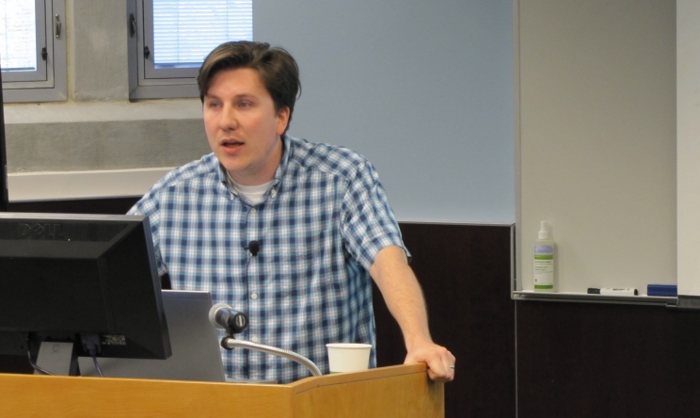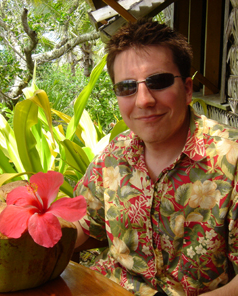NIMBioS Seminar Series
In conjunction with the interdisciplinary activities of the National Institute for Mathematical and Biological Synthesis (NIMBioS), a seminar series on topics in mathematical biology will be hosted at NIMBioS every other Tuesday at 3:30 p.m. (unless otherwise noted) in the Hallam Auditorium, Room 206, Claxton Building, 1122 Volunteer Blvd. Seminar speakers will focus on their research initiatives at the interface of mathematics and many areas of the life sciences. Light refreshments will be served in the 1st floor visitor breakroom beginning 30 minutes before each talk. Faculty and students from across the UT community are welcome to join us.
Time/Date: Tuesday, April 16, 2013, 3:30 p.m.*
Location:
Room 206, Claxton Building, 1122 Volunteer Blvd.
Speaker:
Dr. Tom Currie, Human Evolutionary Ecology Research Group, Univ. College London
Topic:
War and space: Simulating the evolution of old world complex societies
Abstract:
How did human societies evolve from small groups, integrated by face-to-face cooperation, to huge anonymous societies of today, typically organized as states? Why is there so much variation in the ability of different human populations to construct viable states? Existing theories are usually formulated as verbal models and, as a result, do not yield sharply defined, quantitative predictions that could be unambiguously tested with data. In this talk, I will discuss work I have been doing in conjunction with Sergey Gavrilets (NIMBioS, University of Tennessee) and Peter Turchin (University of Connecticut) to develop cultural evolutionary models that predict where and when the largest-scale complex societies arose in human history. Our initial model focuses on the role of costly ultrasocial institutions that enable groups to function without splitting up, and argues that these evolved as a result of intense competition between societies, primarily warfare. Warfare intensity, in turn, depended on the spread of historically-attested military technologies (e.g., chariots and cavalry) and on geographic factors (e.g., rugged landscape). The model was simulated within a realistic landscape of the Afroeurasian landmass, and its predictions were tested against a large dataset documenting the spatio-temporal distribution of historical large-scale societies in Afroeurasia between 1500 BCE and 1500 CE. The model-predicted pattern of spread of large-scale societies was very similar to the observed one. I will discuss the implications of this work and future directions we are exploring as part of my research visit to NIMBioS.
*Join us for refreshments at 3 p.m. in the 1st floor visitor breakroom.
Seminar Flyer (pdf)
For more information about this and other NIMBioS Seminars, visit /seminars.

NIMBioS
1122 Volunteer Blvd., Suite 106
University of Tennessee
Knoxville,
TN 37996-3410
PH: (865) 974-9334
FAX: (865) 974-9461
Contact NIMBioS



